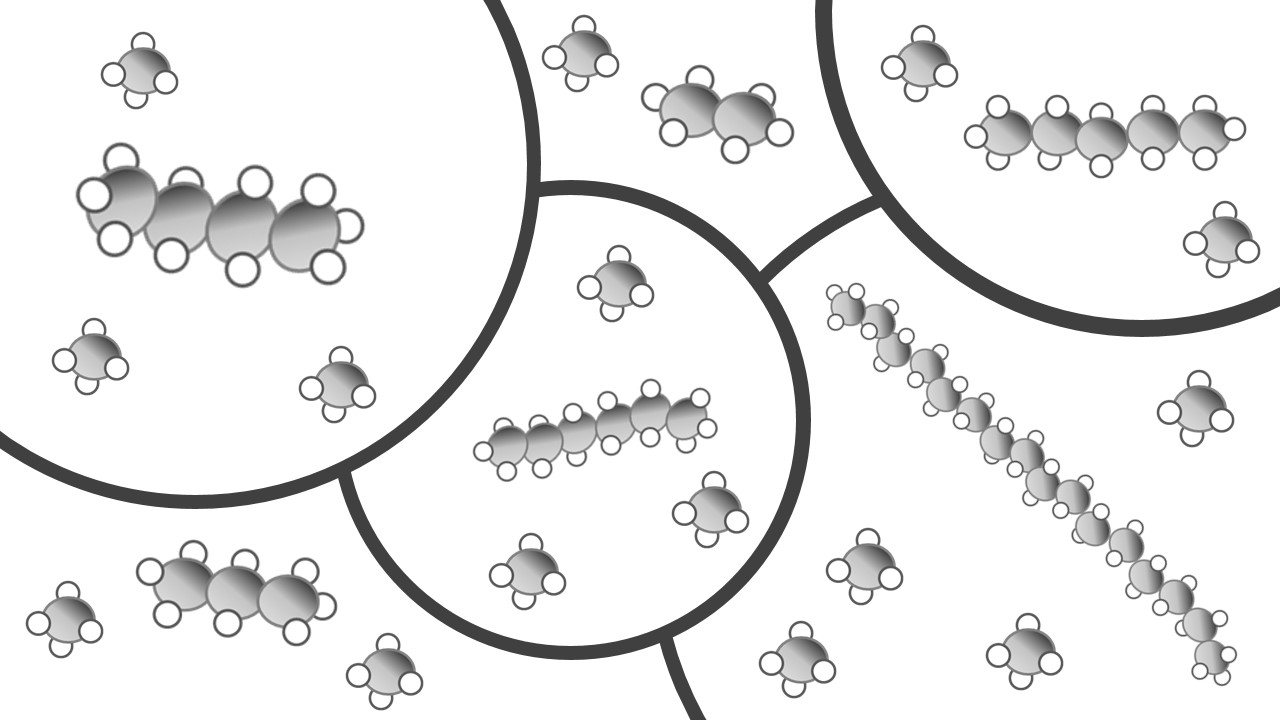In the vast expanse of the microscopic world, a critical question looms large: how much bigger is a molecule than an atom? It is a question that not only intrigues scientifically inclined minds but also posits an engaging challenge for those eager to delve deeper into the realms of chemistry and physics. To grasp the subtle intricacies that differentiate molecules from atoms, we must first comprehend the nature of both constituents, their structures, and their functions.
Atoms are often heralded as the building blocks of matter. Each atom comprises subatomic particles: protons, neutrons, and electrons. Protons and neutrons reside in the atom’s nucleus, forming the core, while electrons orbit this nucleus, enveloped within electron clouds. The dimensions of an atom can vary significantly, attributable to its atomic number and the types of electrons it possesses. Generally, the size of an atom ranges between 30 to 300 picometers in diameter, a scale impenetrable to casual observation. It is here, within this incredibly minuscule expanse, that we begin our exploration of size distinctions.
To draw a comparison, molecules emerge as intricately woven assemblages of atoms, joined together through covalent bonds. When two or more atoms combine, they yield a distinct entity that embodies unique properties, significantly differing from the individual atoms that comprise it. A molecule can consist of just two atoms or an extensive latticework of countless atoms bonded in complex arrangements. As such, the size of a molecule can fluctuate dramatically—from diatomic formations like hydrogen (H2) to macromolecules like proteins or polymers that can reach nanometers in scale.
At this juncture, one might ponder: if an atom measures a mere 30 to 300 picometers, how does this translate to molecular dimensions? A straightforward answer would be a generalization; small molecules may often be a few angstroms in size, while larger biomolecules and synthetic polymers can stretch into nanometer territory—extending from hundreds to thousands of picometers in length. For instance, a water molecule (H2O), which is quintessential to life, has a size of approximately 0.275 nanometers (or 2.75 Å), while a typical protein molecule can be anywhere from 1 to 10 nanometers or even larger.
Upon investigation, one may discover that a molecule can be made up of numerous atoms arranged in precision. The overall size can oftentimes be computed based on the aggregate size of its constituent atoms alongside the distances that separate them due to bond formations. Consequently, the size disparity between a molecule and an atom can sometimes lead to a perplexing realization: a single molecule can be exponentially larger than its atomic counterparts, particularly in the realms of biological and synthetic chemistry.
To illustrate this phenomenon clearer, consider the contrast between a simple diatomic molecule and a complex macromolecule. Take carbon dioxide (CO2), which is a small molecule composed of three atoms—one carbon atom and two oxygen atoms. CO2 possesses a size of roughly 0.33 nanometers. Now juxtapose it with a modern synthetic polymer such as polyethylene, a polymer comprised of thousands of repeating ethylene units. Polyethylene may possess lengths on the order of 100 nanometers or greater, highlighting an extraordinary scale difference between more simple structures and extensive molecular chains.
However, it is also critical to appreciate the dimensional aspects in the context of their corresponding scientific significance. While the molecular scale offers versatility in applications—formulating drugs, creating advanced materials, and engaging in biochemical interactions—the atomic level grounds the principles of elemental structure and atomic interacting forces. In his reflection upon molecular versus atomic sizes, one is drawn into an intricate dance of unity and divergence where intricacies abound.
We can also extrapolate further by remarking on the concept of dimensionality within the molecular regime. Molecules can manifest nearly limitless shapes when factoring in various atomic arrangements, influencing not just size but also the elusive properties such as polarity, reactivity, and states of matter. Therefore, the challenge of ascertaining the relative sizes between atoms and molecules transcends mere numerical comparison and nudges towards a broader comprehension of molecular chemistry.
In conclusion, while a single atom may be a trifling entity measuring in picometers, its molecular progeny can bloom into ethereal structures spanning nanometers and beyond, reflecting a fascinating paradigm of scale within the universe. This interplay extends beyond a mere difference in size; it underscores the foundational principles upon which chemistry is built, highlighting the elegance of atomic interactions that give rise to the astonishing complexity of the molecular world. Thus, the next time one engages in this captivating inquiry, let it serve as a doorway into the limitless potential of the microscopic fabric that constitutes our universe.












